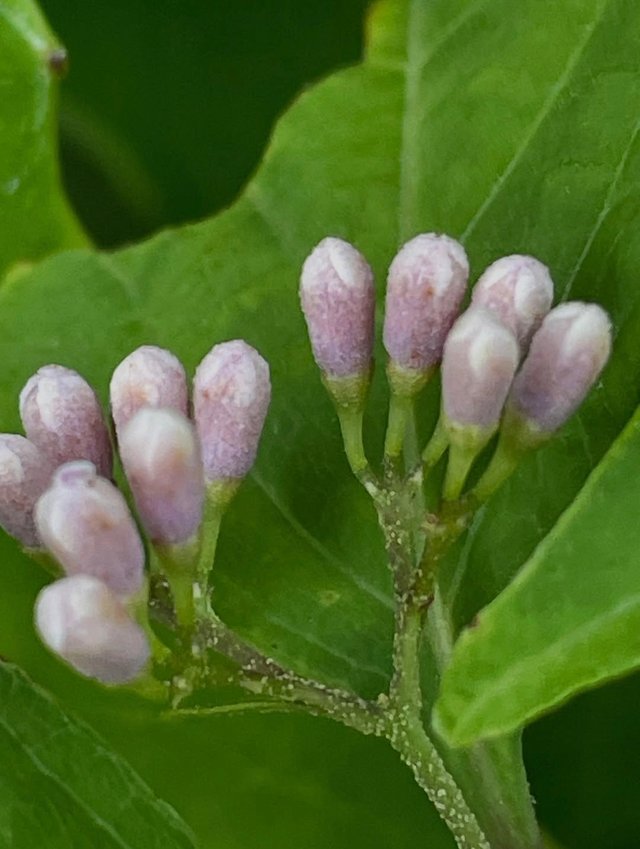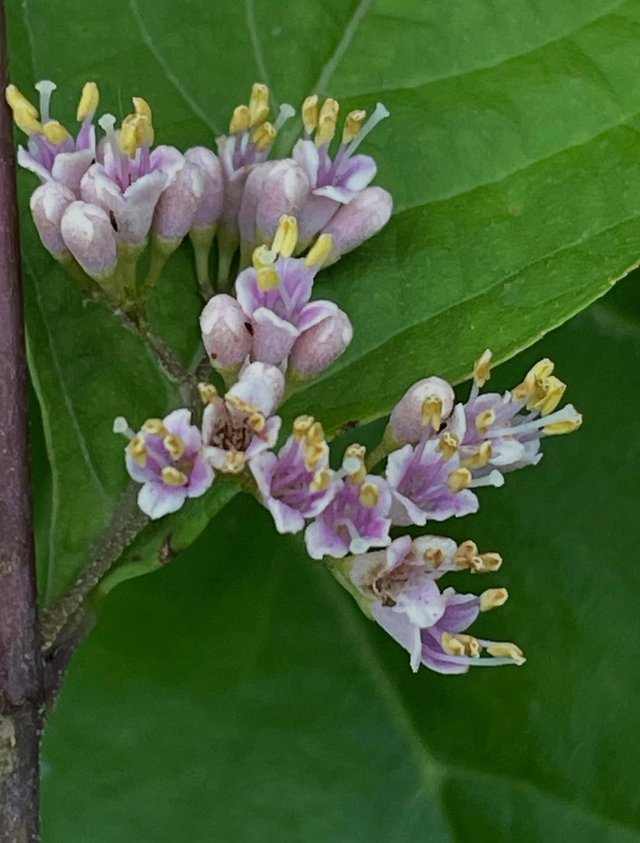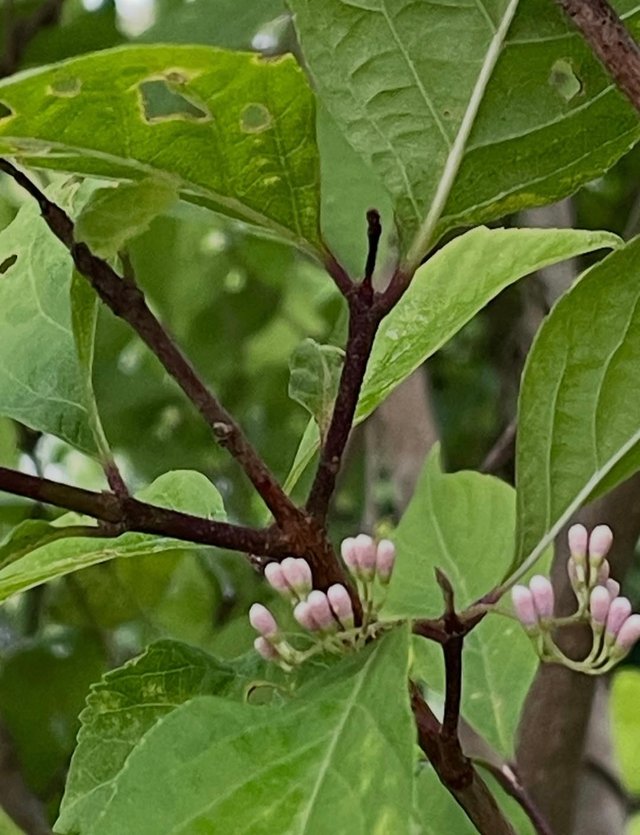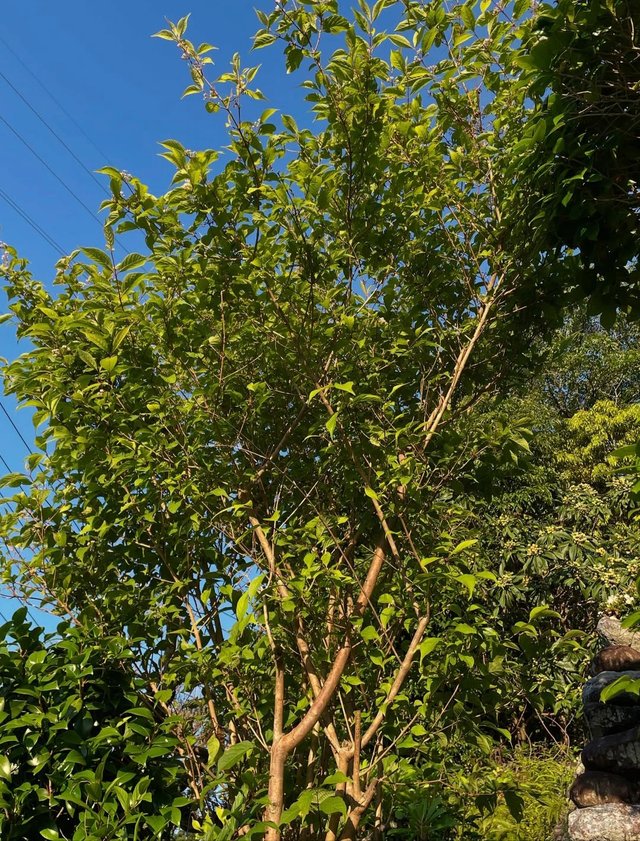



Among the many species in the Callicarpa genus, known collectively as “beautyberries,” Callicarpa mollis stands out for its velvety foliage, delicate flowers, and showy, jewel-like fruit. Native to parts of East Asia—including China, Korea, and Japan—this soft, deciduous shrub brings year-round interest to gardens and landscapes, particularly in the fall when its bright purple berries steal the show.The species name mollis means “soft” or “hairy,” and it’s an apt description of this plant’s foliage. The leaves are simple, opposite, ovate to elliptic, and covered in fine hairs that give them a soft, slightly fuzzy texture. In spring and summer, the leaves are a medium to light green, often with a slightly silvery sheen due to the fine pubescence. In autumn, they may turn a gentle yellow before dropping.
In mid to late summer, Callicarpa mollis produces small, pink to pale lavender flowers in the leaf axils. These blooms may be modest compared to more flamboyant flowering shrubs, but they serve an important ecological role, attracting pollinators like bees and butterflies. The flowers are arranged in small cymes and usually go unnoticed until you take a closer look.After flowering, the real show begins. By late summer to autumn, the plant produces dense clusters of glossy, bright purple berries (drupes) that persist into winter. These fruits are a hallmark of the Callicarpa genus and provide a striking contrast against the bare branches after the leaves fall. While not considered highly palatable to humans, the berries are a food source for birds and small mammals, especially in late autumn when other food sources dwindle.
In its native range, Callicarpa mollis is found in forest margins, stream banks, and woodland clearings. Like other Callicarpa species, it plays a modest but meaningful role in local ecosystems, especially as a food source in leaner seasons.The plant has not been as widely cultivated as some of its cousins—like Callicarpa americana (American beautyberry) or Callicarpa bodinieri var. giraldii (popular in Western ornamental gardens)—but it is gaining attention for its softer aesthetic and velvety leaves.